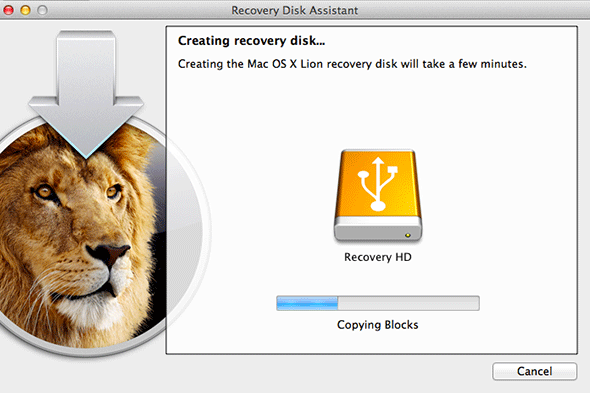Mac OS X 10.8 Mountain Lion v. 10.8.5 Full OS Install - Reinstall / Recovery Upgrade Downgrade / Repair Utility Factory Reset Disk Drive Disc CD DVD Brand: Fast Macs Repair 3.9 out of 5 stars 98 ratings. Just like its predecessor, OS X Mountain Lion draws much inspiration from iOS, the operating system that powers the iPhone and the iPad. The only place to get it is the Mac App Store.

Apple announced a developer preview of OS X 10.8 Mountain Lion (Mac App Store link) in mid-February 2012, and it became available on July 25, 2012. As expected, it makes Macs even more iOS-like, continuing the trend begun with OS X 10.7 Lion in July 2011.
Features ported over from iOS include AirPlay Mirroring, Game Center, Messages, Notes, Notification Center, Reminders, and Twitter integration. New features include Gatekeeper and Share Sheets. Gatekeeper can restrict Mountain Lion Macs to running only apps from the Mac App Store. Share Sheets is designed to make it easier for you to share links, photos, and videos by sending links in Safari, emailing or messaging from Notes, posting photos to Flikr and videos to Vimeo, and “tweeting just about anything.”
As with Lion, Mountain Lion will only available by purchase and download from the Mac App Store, where it retails for US$19.99.
Mountain Lion is susceptible to the “goto fail” bug. See Apple and the ‘goto fail’ Bug for information on securing it.
Apple has really raised the bar on hardware requirments. Where Lion had only left Core Dou Macs behind – all of them introduced in 2006 – Mountain Lion is abandoning Core 2 Duo Macs that use Intel GMA 950 or GMA 3100 graphics. Some of those were introduced in Late 2006, but some were not discontinued until Mid 2009, which means they were barely three years old when Mountain Lion was released.
Models supported by Lion but not Mountain Lion include:
- Late 2006 17″ 1.83 GHz Core 2 Duo iMac, disc. 8/7/07
- Mid 2007 Mac mini, disc. 3/3/09
- Late 2008 MacBook White, disc. 1/20/09
- Early 2008 MacBook Air, disc. 10/14/08
Oldest Macs supported by OS X 10.8 by release date:
Mountain Lion Links
- First Impressions of OS X 10.8 Mountain Lion, Simon Royal, Tech Spectrum, 2012.07.26. Installation took 45 minutes, all apps that ran in Lion run well, and everything seems a little faster.
- The Rapid Rise of OS X Mountain Lion, Dan Knight, Mac Musings, 2012.08.01. In just a few days, Mountain Lion passed Snow Leopard on its way to displacing Lion as the king of the OS X jungle.
Downloadable Updates
Standalone Updates let you update to a newer version of Mac OS X from your hard drive instead of using Software Update, which requires an Internet connection. Download the one(s) you need and install them after mounting the disk image and launching the Installer program.
There are two types of Standalone Updates: Individual (or Delta) and Combo.
- Individual Updates update one version of Mac OS X to the next version. For example, the Mac OS X 10.8.4 Update updates Mac OS X 10.8.3 to version 10.8.4. Individual Updates are also known as Delta Updates.
- Combo Updates update the base version of a Mac OS X release to the version specified in the Combo Update, including all intermediate updates. For example, the Mac OS X 10.8.4 Combo Update updates any earlier version of Mac OS X 10.8 to Mac OS X 10.8.4 using a single installer, as opposed to installing the individual Mac OS X 10.8.1, 10.8.2, 10.8.3, and 10.8.4 updates.

Standalone Updates are generally available 24 to 48 hours after the Update is available through Software Update.
If you burn a Standalone Update to CD, its disk image must be copied to your desktop or another location on your Mac OS X startup disk in order to be installed.

OS X 10.8.1
OS X 10.8.2
Keywords: #osxmountainlion #macosxmountainlion
Short link: http://goo.gl/MSLDYT
searchword: osxmountainlion
9 May 2019
Current Version
EstimateS 9.1.0
IMPORTANT: Operating system limitations of EstimateS 9.1.0(2019)
- MacOS. This version does not operate fully under MacOS 10.12 (Sierra), nor under subsequent versions (High Sierra, Mojave....).
- Windows. This version does not operate fully under Windows 10, nor probably under any subsequent Windows operating systems.
- 'What shall I do?' Anne Chao's website offers excellent R-based tools to compute most of what EstimateS computes (and much more!). You can download the R code, but you need not know any R to use most of Anne's tools, as they are also implemented in easy-to-use, on-screen input/output tools. There is a comprehensive downloadable User's Guide.
http://chao.stat.nthu.edu.tw/wordpress/software_download/

- 'Why can't you fix it?' I first builit EstimateS more than twenty years ago, long before open source software (like R) was available. So it has always run under 4th Dimension, a proprietary development environment. To make it run under current Mac and Windows operating systems would require purchasing about USD$5000 worth of 4D development tools and licenses. I am now retired from teaching and living on a fixed income, so that is not practical (unless some generous benefactor would like to fund it). Anne Chao's approach is the way to go, for now and the future, and Anne has always been my key statistical advisor for EstimateS. ~Robert Colwell
Major new features of EstimateS 9(2016)
- A comprehensively revised User's Guide covering all the new features in EstimtateS 9 and all the traditional ones of previous versions.
- An entirely new capability for handingindividual-based rarefactionwithtrue(unconditional) confidence intervals (and of course, sample-based rarefaction, the core of all previous versions of EstimateS).
- Rarefaction of richness estimators and diversity indices forindividual-based data (as well as sample-based data, as in previous versions).
- Non-parametric extrapolation of rarefaction curves for both sample-based and individual-based data (Colwell et al. 2012).
- Batch input and export option for both sample-based and individual-based datasets.
- Options for computing, displaying, and exporting subsets of results for evenly-spaced intervals for rarefaction and extrapolation of samples or individuals (interval-sampling or knots).
- Automatic support for Internationaland US number formats.
- EstimateS 9 for Windows runs under Windows 8, Windows 7, Vista, and XP.
- EstimateS 9 for Mac OS runs under OS 10.5 (Leopard) through 10.8 (Mountain Lion).
- EstimateS 9 is blazing fast, compared to earlier versions.
With these classic features of previous versions
- Computes Colwell and Mao's smooth species accumulation curves (sample-based rarefaction curves) with true confidence intervals, based on analytical formulas (Colwell et al. 2004).
- Computes a wide range of species richness estimators for sample-based abundance and incidence (presence/absence) data (Chao, Jackknife, ICE, ACE and others).
- Computes asymmetric (log-transformed) confidence intervals for Chao1 andChao2.
- Computes diversity indices (Shannon, Simpson, Fisher's alpha, Hill numbers).
- All richness estimators and diversity indices are computed for every level of sample accumulation, averaged over resamplings.
- Choice of resampling with or without replacement.
- Computes Chao's shared species estimator for sample pairs.
- Computes Chao's Sørensen and Jaccard similarity estimators (Chao et al. 2005).
- Computes classic Jaccard, Sørensen, Bray-Curtis, and Morista-Horn similarity indices for sample pairs.
Click here to download EstimateS 9.0.0 now.
Homepage references (many more in the User's Guide)
Mac Os X 10.8 Mountain Lion Iso Untouched
Colwell, R. K., A. Chao, N. J. Gotelli, S.-Y. Lin, C. X. Mao, R. L. Chazdon, and J. T. Longino. 2012. Models and estimators linking individual-based and sample-based rarefaction, extrapolation, and comparison of assemblages. Journal of Plant Ecology5:3-21. Read it online or download pdf.
Colwell, R. K., C. X. Mao, & J. Chang. 2004. Interpolating, extrapolating, and comparing incidence-based species accumulation curves. Ecology85, 2717-2727. Download pdf. Spanish Version: Download pdf.
Mac Os X 10.8 Mountain Lion Torrent
Chao, A., R. L. Chazdon, R. K. Colwell, and T.-J. Shen. 2005. A new statistical approach for assessing compositional similarity based on incidence and abundance data. Ecology Letters8:148-159. Download pdf. Spanish Version: Download pdf.
